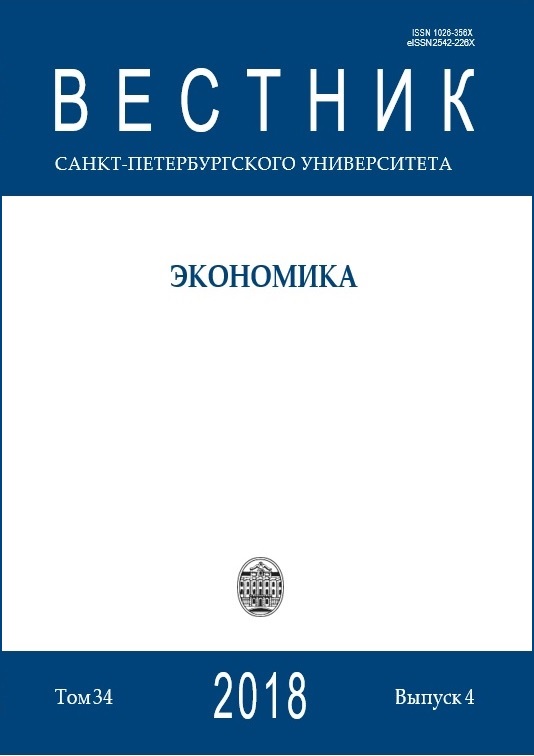Employment adjustment in Russia: Extensive vs itensive margins in 1995–2016
DOI:
https://doi.org/10.21638/spbu05.2018.404Abstract
In this paper I study the adjustment of employment in Russia since its transformation to a market economy. Employment is considered in terms of total hours of work in the economy. This allows to decompose the adjustment into two components: extensive margin (the number of people employed) and intensive margin (the number of hours per employed worker). The task is to estimate the contribution of both margins of employment adjustment. The Rosstat and the OECD aggregate annual data of 1995–2016 are used. The results of the decomposition show that fluctuations on extensive margin are a lot more important for cyclical fluctuations in the total hours of work. A slight decrease of extensive margin in 2010–2016 is mainly at-tributed to the decline in volatility of the number of people employed which took place during a protracted period of slowing economic growth. Since the early 2000s, the labour market is more responsive to negative shocks rather than positive ones. To see peculiarities of employ-ment adjustment in Russia I perform comparative analysis with the relevant statistics for Ger-many and the US. Number of employees seems to be the most relevant proxy of the behavior of labour inputs in the Russian economy. The results obtained are new to research area of the Russian labour market.
Keywords:
employment, labour market, adjustment, intensive margin, extensive margin, hours worked, Russia
Downloads
References
References in Latin Alphabet
Translation of references in Russian into English
Downloads
Published
How to Cite
Issue
Section
License
Articles of the St Petersburg University Journal of Economic Studies are open access distributed under the terms of the License Agreement with Saint Petersburg State University, which permits to the authors unrestricted distribution and self-archiving free of charge.






